Tibet Climate: What is the Climate on Tibetan Plateau
- by Eric
- Last Updated: 2023-03-28
The climate on the Tibetan plateau is cold and typical of the high-altitude plateau climate. However, Tibet is a huge tract of land, and the different regions of the Tibet have varying climate. Another notable feature of Tibet's climate is dry. The Tibetans call Tibet “The Land of Snows.” Yet, most of the years, Tibet only receives average annual precipitation (rain and snow) of around 18 inches (460 mm) and much of this precipitation falls during the summer months from May to September.
In general, the climate in Western(Ngari) and Northern Tibet(Nagqu) is cold and dry; while the climate in Eastern(Chamdo) and Southern(Lhoka/Shannan) is moderate and humid. There're obvious vertical climate zones in Tibet.
So for travelers, the best time to visit Tibet is during Spring and Summer, specifically, from the months of April up to October, though you can visit some parts of Tibet all year-round. Here is very detailed climate information, including the weather on popular tourist destinations.
Table of Contents
- A. Distinct Characteristics of Tibet Climate
- B. Weather Condition in the Tourist Sites of Tibet
- C. Peak & Low Tourism Seasons in Tibet
- D. Conclusion
A. Distinct Characteristics of Tibet Climate
The climate and weather conditions in Tibet show some distinctive characteristics that you would seldom experience in places of the same latitude as Tibet. These distinctive features include the following:
1. Tibet Atmosphere is Severe, Dry, Continental Climate
Tibetan plateau is bound by two huge mountain ranges, namely: the Himalayas in the south and southwest and the Tanggula Mountain Range in the north. Characterized by strong winds, rarefied, and low humidity atmosphere, the Tibetan Plateau is greatly exposed to cool arctic air. Therefore, the Qiangtang region doesn't have trees or any large farmlands. So, you'll see grasslands in this area, which is almost two-thirds of the total area of Tibet. It stretches for almost 1,600 kilometers and features vast highlands as well as giant lakes.
Tibet is also barely penetrated by the southern tropical air masses because of the Himalayan barrier. Thus, it gets minimal rainfall throughout the year because the Himalayas blocks the rain-bearing clouds from the Indian Ocean and Subcontinent of India.
2. Low Air Pressure and Thin Air
Tibetan plateau is a high-altitude place with an average elevation of more than 4,000 meters. So, when you visit Tibet, you might feel a little bit uncomfortable due to the rarefied air. Well, it's the common symptom of altitude sickness and for most people. Symptoms of which include headache, vomiting, trouble sleeping, dizziness, tiredness, and shortness of breath. Please don't worry about this cos it would get recovered in 2 days after your body adopts the high-altitude conditions.
3. Abrupt Temperature Changes Between Night and Day!
The temperature may greatly vary between daytime and nighttime. For example, Lhasa's maximum daytime temperature is 30°C in summer, but it can radically drop to 2°C during the late-night time and early morning. This bitter cold temperature is further aggravated by the flow of gale winds throughout the area. Thus, in Tibet, you can experience four seasons even in a day!
4. Strong Solar Radiation
Solar radiation is very strong in Tibet. Well, this is understandable considering its extremely high altitude. Compared to other places with the same latitude, Tibet gets more than twice as much solar radiation. So, to protect yourself from extreme UV light, you need to bring your sunglasses, a sun hat, and sunscreen to protect yourself from sunburn and other detrimental effects of too much UV light exposure.
5. Distinctive Wet and Dry Season
The rainy season is very much distinct in Tibet with the rain season starting from April to May in Eastern Tibet (Zayu and Mêdog Counties). Then, the impact of the rainy season gradually sets in the middle(Lhasa and Shigatse areas). The whole of Tibet is then affected by the rainy season by July. Moreover, around 90% of precipitation occurs between May and September. If you visit Tibet during these months, you’ll be surprised by the fact that most of the rain happens during nighttime.
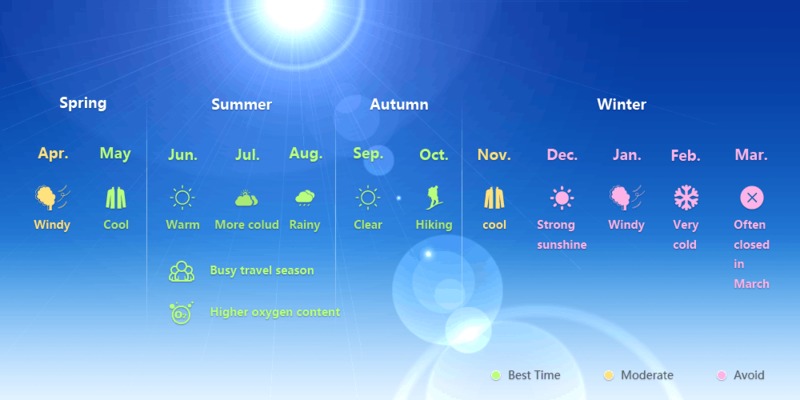
B. Weather Condition in the Tourist Destinations
If you are touring Tibet, you might be interested in the weather conditions of the tourist spots frequently visited in Tibet.
1. Climate in Lhasa
Lhasa is the most commonly visited place in Tibet, being the capital city of Tibet. It is situated at an altitude of 3,500 meters (11,500 feet) above sea level. It is also referred to as "the city of sunlight" because of the ample sunlight it receives throughout the year. In fact, it has almost 3,021 hours of daytime every year as compared to the Sichuan and Taipei Basins that receive only 1,000 hours of sunshine per year.
Summer in Lhasa is also mild with cold nights. During winter, nights are freezing cold, but it's still warm in the daytime. At winter night, you have more chances to view the starry sky. Sometimes, light snowfall occurs.
Climate chart of Lhasa,
| January | February | March | April | May | June | July | August | September | October | November | December | |
|---|---|---|---|---|---|---|---|---|---|---|---|---|
| Ave. Temp. | - 1.8 | 1.1 | 4.4 | 8 | 12.2 | 15.9 | 15.9 | 15.1 | 13.3 | 8.6 | 3 | -0.8 |
| Max. Temp. | 6.7 | 9.1 | 12.1 | 15.5 | 19.5 | 22.7 | 21.8 | 20.9 | 19.5 | 16.2 | 11.4 | 7.6 |
| Min. Temp. | -10.2 | -6.8 | -3.2 | 0.6 | 4.9 | 9.2 | 10 | 9.3 | 7.3 | 1.1 | -5.3 | -9.2 |
The best months to visit Lhasa are May, June, September, and October. July and August are the rainiest months, but it mainly rains at night, so your tour plan will not get affected. Moreover, Lhasa has a relatively mild climate throughout the year. It is neither too cold during winter, nor too hot during summer. So, Lhasa is a perfect destination to visit of the year.
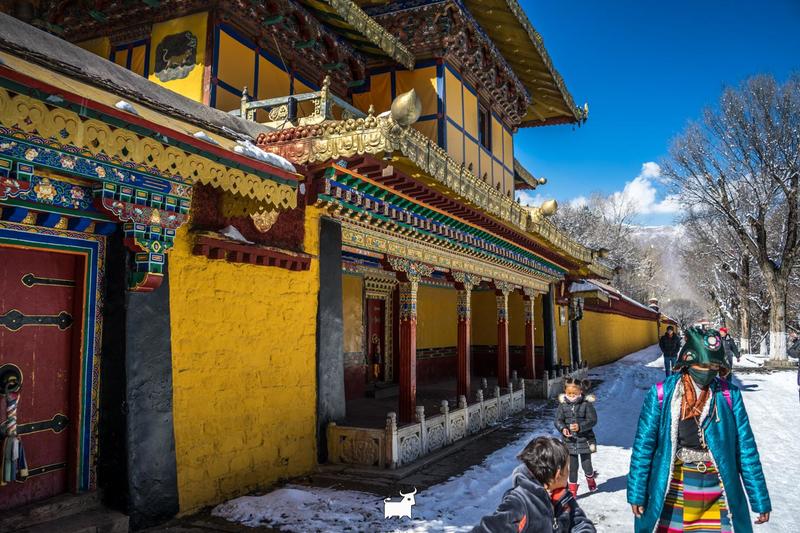
2. Climate in Everest Base Camp
The best place where you can have a clearer view of Mount Everest—the highest mountain in the world—is at Everest Base Camp (EBC). It is situated in the west of Tibetan plateau and belongs to Shigatse Prefecture. It is at the edge of the Subcontinent of India, and thus, the Indian Monsoon still influences it, bringing in clouds and moisture during the months from June to August. The cold months in Everest are from December to January.
Climate chart of EBC,
| January | February | March | April | May | June | July | August | September | October | November | December | |
|---|---|---|---|---|---|---|---|---|---|---|---|---|
| Ave. Temp. | - 7.9 | - 5.4 | -1.8 | 2.5 | 6.9 | 11.1 | 11.9 | 11.1 | 9.1 | 3.6 | -2.8 | -6.8 |
| Max. Temp. | 0.8 | 2.7 | 6 | 10 | 14.2 | 17.9 | 17.9 | 16.9 | 15.3 | 10.7 | 5.4 | 1.8 |
| Min. Temp. | -16.5 | -13.5 | -9.6 | -4.9 | -0.3 | 4.4 | 5.9 | 5.5 | 2.9 | -3.5 | -11 | -15.4 |
So, if you want to have a trekking tour at the foot of Mount Everest, you should visit the Everest Base Camp in-between the rainiest and the coldest months. This means the best time to visit EBC is from April to May and September to November. During these months, the climate is moderate.
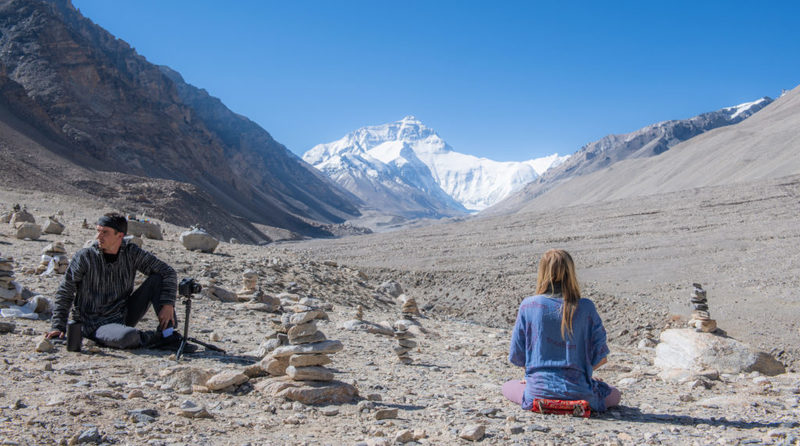
3. Climate in Shigatse
Just like the climate in Lhasa, Shigatse—the second largest city of Tibet—has clearly demarcated wet and dry seasons. January and February are the driest time of the year. Shigatse is slightly higher than Lhasa in altitude and is closer to the Himalayas than Lhasa. It has semi-arid and harsher weather than Lhasa.
Climate chart of Shigatse
| January | February | March | April | May | June | July | August | September | October | November | December | |
|---|---|---|---|---|---|---|---|---|---|---|---|---|
| Ave. Temp. | -3.7 | -0.8 | 2.8 | 7.2 | 11 | 14.9 | 14.7 | 13.9 | 12.1 | 6.9 | 1 | -2.5 |
| Max. Temp. | 5.6 | 7.9 | 10.9 | 15.2 | 18.9 | 22.2 | 20.8 | 19.7 | 18.5 | 15.1 | 10.3 | 7 |
| Min. Temp. | -13 | -9.4 | -5.3 | -0.7 | 3.2 | 7.6 | 8.7 | 8.1 | 5.7 | -1.2 | -8.3 | -12 |
The best months to tour Shigatse are from April to November, considering that the temperatures are fairly stable during these months. The best time for trekking tours here is from April to May as well as from September to October. Still, you can travel to Shigatse all year round.
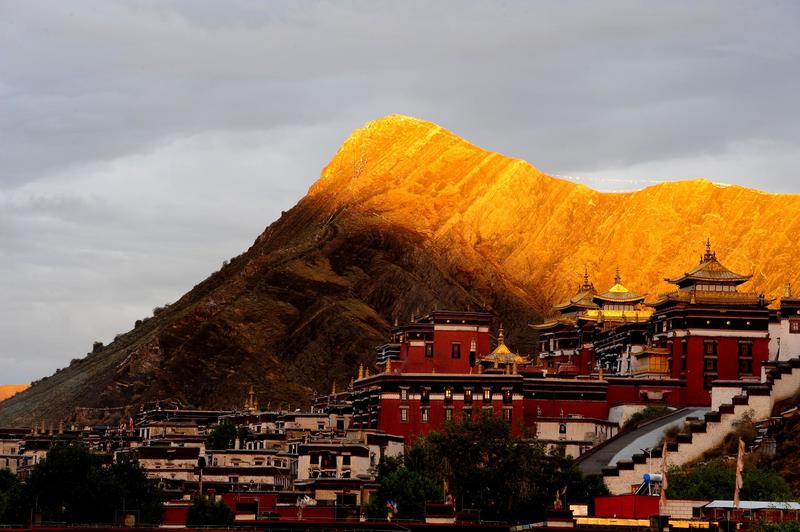
4. Climate in Mount Kailash and Manasarovar Area
Mount Kailash and Lake Manasarovar are frequented by pilgrims and tourists because these two places are considered sacred by several faiths - Buddhists, Hindus, Jains, and Bons. These two places are nearby and all located in Ngari Prefecture.
Climate chart of Mt.Kailash
| January | February | March | April | May | June | July | August | September | October | November | December | |
|---|---|---|---|---|---|---|---|---|---|---|---|---|
| Ave. Temp. | -9.7 | -8.5 | -5.1 | -0.9 | 2.5 | 6.8 | 8.3 | 8 | 5 | -0.9 | -5.8 | -8.2 |
| Max. Temp. | -3.8 | -2.7 | 0.2 | 5.7 | 9.6 | 13.5 | 13.8 | 13.2 | 10.8 | 5.9 | 0.6 | -2 |
| Min. Temp. | -15.6 | -14.2 | -10.3 | -7.4 | -4.6 | 0.1 | 2.9 | 2.8 | -0.8 | -7.7 | -12.1 | -14.4 |
The best time to visit Mount Kailash is during spring and autumn, outside of the rainy season of June, July, and August to avoid muddy roads and foggy atmosphere.
The popular months for trekking around Mount Kailash are from April to May. During this period, you'll get warmer temperatures and you'll see blooming flowers along the roadside. Besides, days are longer during this period with more warm sunlight.
The period from September to October likewise offers an excellent time for trekking with a clear sky and more oxygen and higher temperatures. You can also schedule your visit to Mount Kailash during the Saga Dawa Festival when many pilgrims from all over Asia and Tibet come to engage in Kora around Mount Kailash.
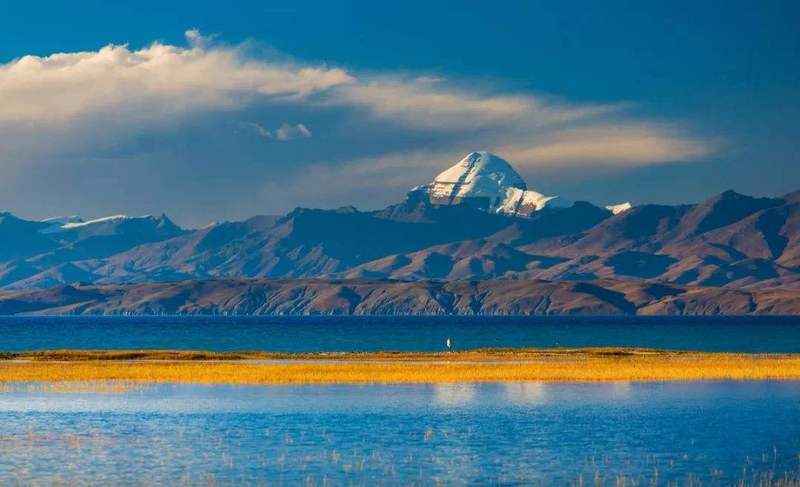
5. Climate in Tsedang (Central Tibet)
Tsedang lies just south of Lhasa and the weather there is mild with warmer temperatures. This place is known as the "Cradle of Tibet Civilization.” Lhoka is the ancient land that lies along the Yarlung Tsangpo River's lower reaches. This area is bound by Shigatse to the west and Lhasa to the north. Nyingchi to the east and Arunachal Pradesh and Bhutan to the south.
The climate of Lhoka doesn't exhibit the four distinct seasons and doesn't have a real summer. Winter here is mild and warm.
Climate chart of Tsedang
| January | February | March | April | May | June | July | August | September | October | November | December | |
|---|---|---|---|---|---|---|---|---|---|---|---|---|
| Ave. Temp. | -9.9 | -8.3 | -5.3 | -1.6 | 2.6 | 6.5 | 7.2 | 6.6 | 4.9 | 0 | -5.3 | -8.2 |
| Max. Temp. | -1 | 0.5 | 2.7 | 6 | 9.4 | 12.6 | 12.6 | 12 | 10.7 | 7.2 | 3.3 | 1.1 |
| Min. Temp. | -18 | -17.1 | -13.3 | -9.1 | -4.2 | 0.5 | 1.9 | 1.3 | -0.9 | -7.1 | -13.9 | -17.5 |
The best time to visit Lhoka is from June to August, though you can visit the prefecture all-year-round because it has more temperate sub-tropical weather. The temperature in Lhoka and the rest of Tsedang(tourists gathering place in Lhoka) is milder than that of Lhasa because it lies in a river valley, which makes the area suiitable for all-year-round visits.
The best Time to Trek Samye and Ganden Monastery would be from April to June, along with September to November.
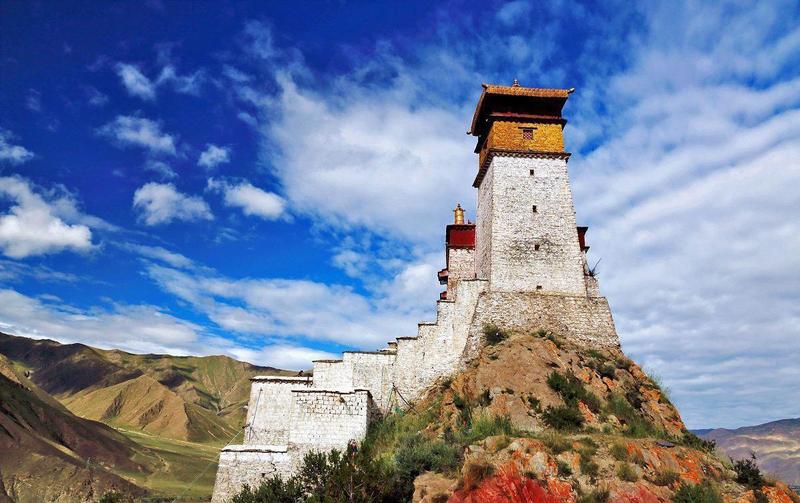
6. Climate of Nyingchi (Eastern Tibet)
Nyingchi is considered the lowest region of the Tibetan Plateau with a 3,000-meter average elevation. Classified as a warm and temperate zone in Tibet, Nyingchi is abundant in rainfall with an average annual rainfall of around 650 milliliters. It is known for its warm and mild climate.
Climate chart of Nyingchi
| January | February | March | April | May | June | July | August | September | October | November | December | |
|---|---|---|---|---|---|---|---|---|---|---|---|---|
| Ave. Temp. | 1.3 | 3.4 | 6.7 | 9.6 | 12.8 | 15.7 | 17.5 | 16.5 | 14.9 | 11.1 | 6 | 2.5 |
| Max. Temp. | 8.1 | 9.7 | 13.3 | 16.3 | 19 | 21.4 | 22 | 22.3 | 20.5 | 17.4 | 13.1 | 9.6 |
| Min. Temp. | -5.5 | -2.9 | 0.1 | 3 | 6.6 | 10.1 | 13 | 10.8 | 9.4 | 4.8 | -1 | -4.6 |
The Best Time to Visit Nyingchi is during spring and autumn. Spring lasts from March to early May. During this time, the weather is pleasantly warm, and the place is astonishingly replete with peach blossoms. During Autumn, Nyingchi readily turns golden with all the trees shedding their summer leaves. The whole surrounding is blanketed with leaves and the view is enhanced by snow-capped mountains. Nyingchi is also can be visited all year round.
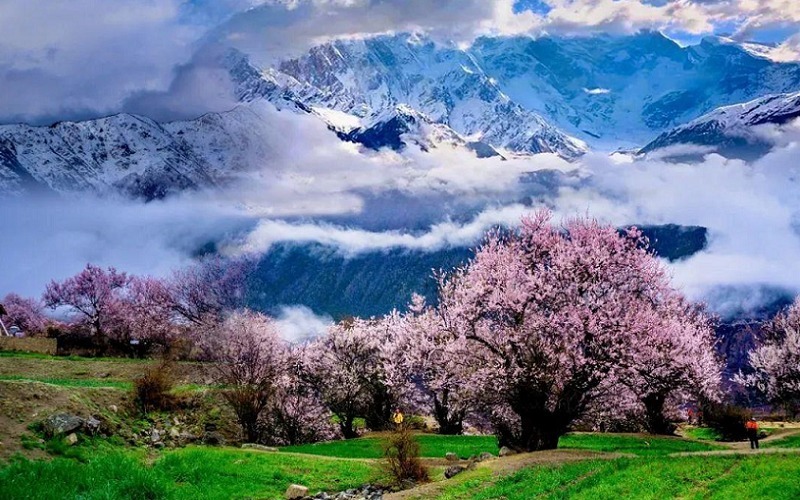
C. Peak & Low Tourism Seasons in Tibet
As mentioned above, the best time to visit Tibet is from April to October. So starting from April, more and more domestic and international tourists flock to the main tourist sites of Tibet. The Peak Tourist Season is from July to September.
The advantages of traveling during peak season include having the benefits of comfortable, warm and mild weather. Besides, the oxygen levels are higher during this time of the year. Plus, all the main attractions and tourist sites are open.
The low travel season is from November to January. During this period, some tourist spots would get closed, such as Lake Namtso, Mt.Kailash, etc. However, if you are going to travel from Lhasa to Kathmandu along the Friendship Highway, winter is still a good time to go.
During the low tourist season, you may enjoy the free attractions' policy, discounted transportation, accommodations, airfare, less crowd, and so on. And the average temperature during winter in Lhasa is 9.5°C and you'll get to experience lots of sunshine during the daytime. Please contact our travel consultants for the up-to-date info.
D. Conclusion:
Tibet is a vast and expansive tract of land with a variable climate from region to region. So, the best time to visit Tibet depends on where you would like to visit and what you want to see. Lhasa, Shigatse, Lhoka, and Nyingchi can be visited all year round due to the mild climate. But Ngari(where Mt.Kailash and Lake Manasarovar are located) and Nagqu(Lake Namtso) are not advisable during winter time - from November to March due to the harsh climate.
The EBC is recommended to visit from April to May and September to November for a clearer view of Mt.Everest; Mt.Kailash is recommended to visit from September to October due to the nice weather and comparatively higher temperature in that area; while Nyingchi is recommended to visit during spring and autumn due to the splendid scenery of peach blossom.
And of course, when to come is entirely up to your schedule, even your preferred time is not in the recommendation list, we can still arrange your trip. We provide various Tibet group tour packages with multiple departure dates for your choice. If you have anything unclear, please feel free to contact us.
Related Articles
-
Best Tibet Hotels
Popular hotels in Tibet include Luxury hotels, comfortable hotels and economic hotels. Here's the list of best Tibet hotels for your consultation and booking. -
15 Little-known Mount Kailash Facts & Mysteries
Little-known mysteries and facts about Mount Kailash might amaze you. It's a holy place of many sects including Buddhism, Bon, Hinduism, and Jainism. -
Travel to Tibet from Singapore
Singapore citizens are recommended to fly to Chengdu and then take a flight or train to Lhasa. Tibet Travel Permit is still an indispensable document for you. -
Travel to Tibet from Japan
Getting to Tibet from Japan is easy now. You are recommended to travel to Tibet via mainland China, then take a train or flight to Lhasa. -
How to Travel to Tibet from Malaysia?
Malaysian travelers who want to visit Tibet must be on an organized tour. You can choose to get to Tibet via mainland China or via Kathmandu, Nepal. -
How to Go to Kailash Mansarovar from Delhi?
For travelers from New Delhi, there're two easiest ways to go to Kailash Mansarovar. The most popular way is to travel overland via Kathmandu. -
Travel to Tibet from India
From India to Tibet is relatively easy now. You can fly or travel overland from India to Kathmandu, then take a flight or a land trip to Tibet. -
Nepal Bhutan Tibet Travel Map
Nepal, Bhutan and Tibet are distributed on the south and north sides of the Himalayas, sharing the beautiful scenery. Here're detailed travel maps. -
What to Pack for Mount Kailash Trekking Tour?
What to pack for your Mt.Kailash trekking tour? You don't have to carry all the items for the 3-day Kailash trek. Here's the list you might need. -
Tibetan Plateau - The World's Highest Plateau
Tibetan Plateau is the world's highest plateau, known as the "roof of the world". Most areas are located in western China, and part of Kashmir. -
Top 10 Meditation Retreats in Tibet
Meditation can allow us to fully release stress and traveling to Tibet can see plateau scenery. Combining both will be an amazing journey of a lifetime!
Email response within 0.5~24 hours.


